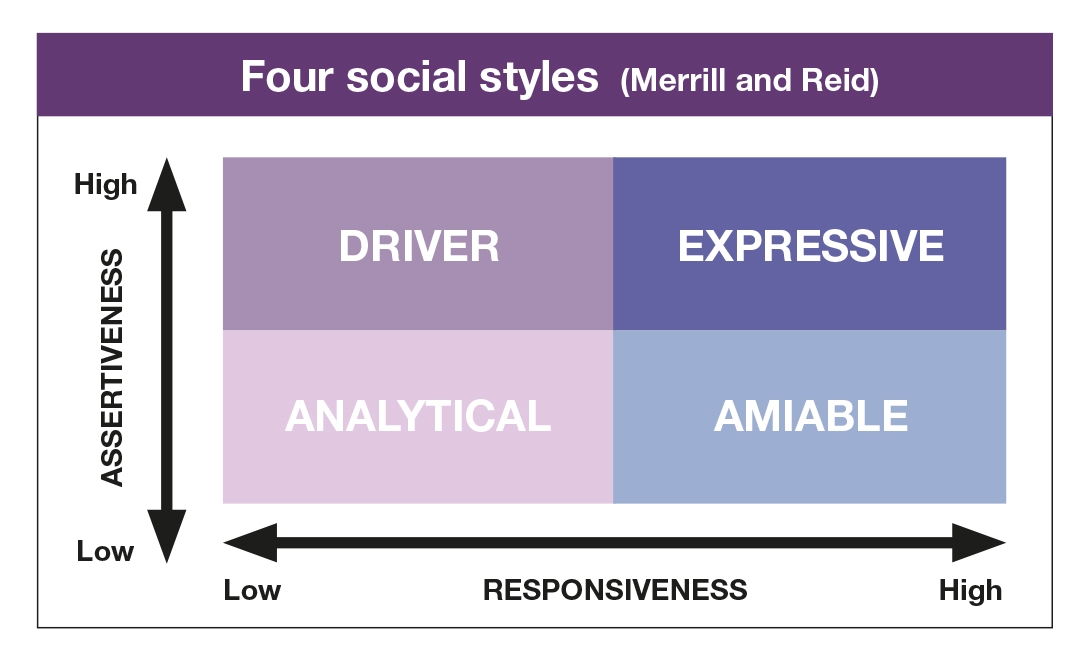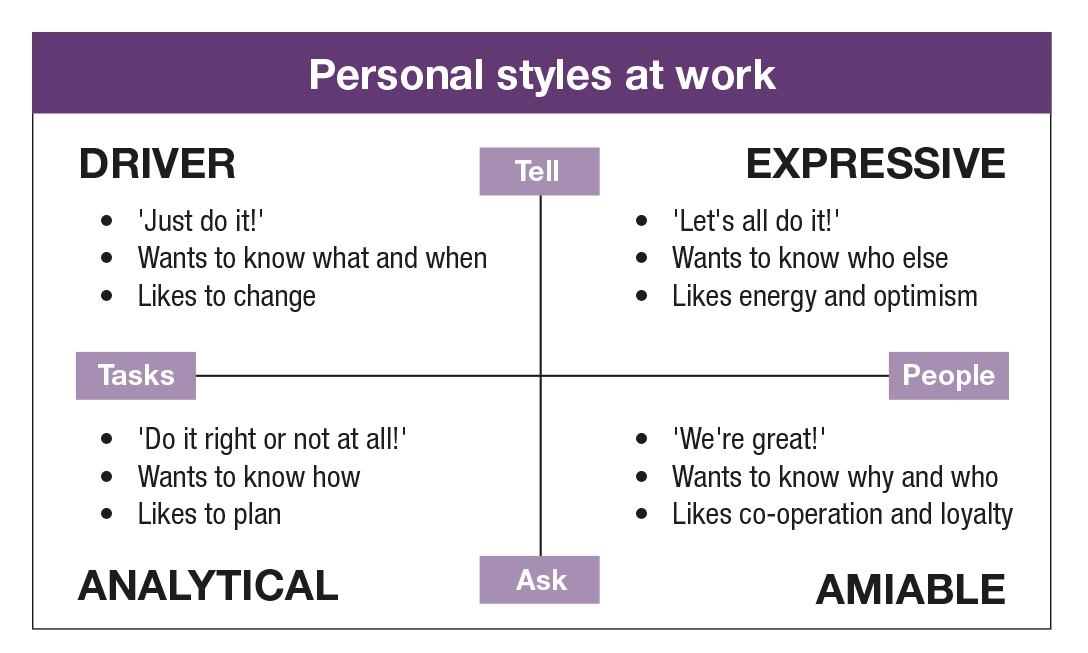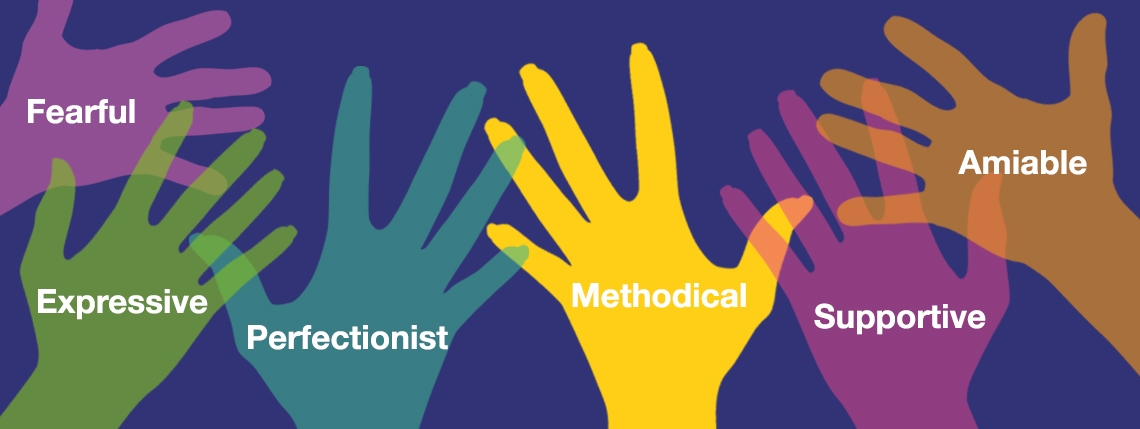Dan Duran explores the four social styles and why they are important to you and your health and fitness business.
Every client you meet will be slightly different, however, there will often be key similarities that, if you can recognise, will help you build a long-standing relationship. Aside from their physical aims and fitness goals, it is important to figure out the type of person your client is and style of interaction they favour. The more you can connect with your PT client or fitness class attendees, the more likely they are to keep coming back and achieve their goals.
There are four social styles, as outlined by Dr David Merrill and Roger Reid. Through their work, they discovered that people’s behaviours and actions are consistent and fall into four categories. The Social Styles ModelTM was formed and is now owned by the Tracom Group, a workplace performance group specialising in interpersonal skills training and performance consulting, but there is something we can all learn from the model.
Why is this important for fitness professionals? Just as you have a preferred social style, so do your clients, and this can make a real difference to the kind of experience you can offer them. As your clients’ social styles may differ from your own, it pays to learn about their communication preferences. Everyone likes to be heard, and a common complaint from clients is that they feel misunderstood by their trainers, so to build a stronger relationship, it pays to find out more about your clients’ social styles as well as your own.
The four social styles
Driving (Tell assertive + control responsive)
A driving person is more strong-willed, emotionally controlled, direct and self-contained. They tend to be driven to win and achieve, often known as someone who gets results. They have a high expectancy of themselves and others, and fear being viewed as soft.
Some liabilities of the driving style are: inflexible, impatient, intolerant, as well as occasionally lack sensitivity. They tend to be more abrupt and can alienate others who have a different style.
When communicating with a driving personality you should be straightforward, clear and concise. Stay focused on their goals and appear to be efficient and well prepared. Always demonstrate competency; never say anything without being able to back it up.
Don’t stray from business, leave any of their concerns unaddressed or give ambiguous answers. Avoid appearing anxious or flustered and don’t give the appearance of lack of confidence.
Analytical (Ask assertive + control responsive)
The analytical person is more self-contained, reserved and introverted. They are described as serious and more exacting; their greatest fear is irrationality. They tend to be great problem solvers as they do their work in a systematic and logical manner. They are well organised and have an affinity for structure and always following through.
Some liabilities of an analytical are that they tend to be perfectionists, are often inflexible and usually lack spontaneity.
When communicating with an analytical, always be prepared; if giving a presentation, ensure it is detailed and methodical, and give supporting data and research. Always be accurate and not overly ambitious in the goals you set.
When communicating with an analytical, don’t show up disorganised or appear to lack expertise or attention to detail. Don’t appear frivolous, and avoid communicating on personal level.


Amiable (Ask assertive + emote responsive)
The amiable person is usually seen as easy-going and supportive. They dislike conflict and avoid aggressive behaviour. They are warm, friendly, relationship-oriented and good listeners. They tend to be very earnest, methodical and thorough.
Some liabilities of an amiable are that they are considered timid, unassertive and have an extreme external frame of reference. They also tend to vacillate in decisions and have a great fear of change.
When communicating with an amiable, gradually progress into a presentation with an icebreaker or a point of commonality before proceeding. Always present yourself in an easy-going and softly spoken manner. If possible, look at how results will benefit others and use testimonials.
When communicating with an amiable, avoid being overbearing or having an urgent, all-business disposition; you will also want to avoid putting pressure on them.
Expressive (Tell assertive + emote responsive)
The expressive is the most extroverted and direct of the personality types. They are more open, outgoing and dramatic. They are also jovial, playful, and fun to be around. They tend to be more intuitive and persuasive than others.
The liabilities of an expressive are that they need constant stimulation and dislike routine. They tend to have erratic focus and lack of awareness toward the boundaries of others. Their greatest fear is rejection.
When communicating with the expressive, always be friendly and engaging. They tend to like stories, metaphors and analogies. Like the amiable, try to provide testimonials.
When communicating with the expressive, don’t dominate the conversation or appear detached from what they are saying; avoid discussing details, theories, or research in too much depth, as this will only frustrate them.
The expressive and amiable styles display emotions openly and respond best to those who do the same. They tend to build strong relationships but it can have mixed effects on team dynamics. The driving and analytic styles, on the other hand, tend to view displays of emotion as only being relevant in certain settings. These two styles care just as much about personal relationships and feelings as their emoting counterparts, but they prefer to express themselves rationally at work.
Using the social style model with your clients
The big take-away from all of this is that we really need to start by understanding ourselves. Which style can you identify with the most? Have a read of the descriptions again and get your friends involved; who do you think you are? And do they agree? When you get that part down it should help you better understand how to leverage your strengths, but be cautious of those liabilities.
When interacting with other social styles, be aware of the impact your personality can inadvertently have on theirs – be versatile. Use the ‘mirroring and matching’ techniques Bobby Cappuccio often discusses; this involves adapting your style to theirs. Mirror their appearance, physical movements and posture. If they are excited and animated, you should be excited and animated; if they are more laid back, quiet and create more space between you, do the same. Be aware of words or phrases they use and repeat them back, both as a paraphrase and within your own dialogue. Be aware of and maintain the same type of eye contact and personal space they prefer.
The most important person in your professional communications and relationships is the person in front of you. Just like first understanding your movement style (traditional, hybrid or progressive) and your tendency to want to train clients in that style, it’s important to adapt your social style to theirs. Remember, your movement style and social style will not influence your success – your versatility will.
Always meet your client where they need to be met; it’s not about you, it’s about them.
About the author

Dan Duran is currently the director of education and global business development for PTA Global. He has more than 20 years’ experience in training and training management including more than five years as a fitness director including at the Midtown Athletic Club in Georgia and Yuba City Racquet Club in California.







